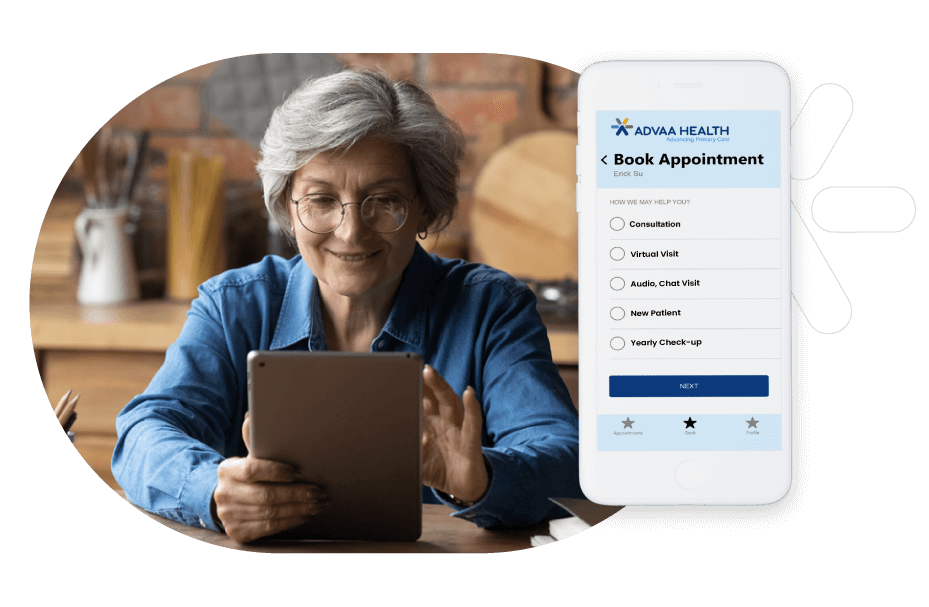In the ever-evolving landscape of healthcare, the use of telemedicine in primary care is rapidly gaining prominence. This innovative approach to healthcare delivery is transforming the way we access and receive medical services, making it more convenient and accessible than ever before. This blog explores the promising future of healthcare through the lens of telemedicine, shedding light on its benefits, challenges, and the pivotal role it plays in shaping the healthcare landscape.
The Telemedicine Revolution
Telemedicine, often referred to as telehealth, is the use of digital technology to provide medical care and consultation remotely. This can be in the form of video calls, phone calls, text messages, or even email. In primary care, telemedicine has become a game-changer. It offers patients and providers a variety of advantages that make it a compelling choice for delivering and receiving healthcare.
Benefits of Telemedicine in Primary Care
Accessibility
Telemedicine breaks down geographical barriers. Patients in rural or underserved areas can now access quality primary care without the need to travel long distances. It is especially vital in emergencies or for patients with mobility limitations.
Convenience
The convenience of telemedicine cannot be overstated. Patients can schedule appointments at their convenience, reducing wait times and minimizing disruptions to their daily lives. This convenience also extends to healthcare providers, who can manage their schedules more efficiently.
Reduced Costs
Telemedicine can be a cost-effective alternative to in-person care. It eliminates the need for travel expenses and minimizes administrative costs for healthcare providers, which can lead to lower costs for patients.
Quality Care
Telemedicine is not about compromising the quality of care; it’s about enhancing it. Patients can consult with specialists and primary care physicians who may be located in different cities or states, ensuring they receive the best possible care.
Chronic Disease Management
Telemedicine is particularly effective in managing chronic conditions. Patients can receive regular check-ups and monitoring, reducing the need for frequent in-person visits.
Reduced Transmission of Infections:
In the wake of the COVID-19 pandemic, the importance of reducing the transmission of infections is evident. Telemedicine minimizes the need for in-person visits, which can help protect patients and healthcare providers alike.
Challenges in Implementing Telemedicine
While telemedicine offers numerous advantages, it is not without its challenges. These obstacles need to be addressed for the widespread adoption of this innovative approach to primary care.
Digital Divide
Not everyone has access to the necessary technology for telemedicine, including high-speed internet and smartphones. Bridging the digital divide is essential to ensure equitable access to care.
Regulatory Hurdles
The legal and regulatory landscape surrounding telemedicine varies by region and can be complex. Clear and standardized regulations are required to ensure the safety and efficacy of telehealth services.
Data Security and Privacy
The transmission of medical information and patient data over digital networks raises concerns about data security and privacy. Ensuring the confidentiality of patient information is crucial.
Limited Physical Examination
Some medical conditions require hands-on examinations, making telemedicine less suitable for these cases. Striking a balance between remote and in-person care is essential.
The Role of Telemedicine in Primary Care
Telemedicine’s role in primary care extends beyond convenience and cost-effectiveness. It is a crucial tool in addressing the healthcare challenges of the 21st century. Here are some key areas where telemedicine is making a difference:
Preventive Care
Telemedicine facilitates regular check-ups and health monitoring, helping in the early detection of health issues and promoting preventive care.
Mental Health Support
Access to mental health professionals has never been more critical. Telemedicine provides a platform for patients to seek mental health support discreetly and conveniently.
Chronic Disease Management
Managing chronic conditions like diabetes, hypertension, and asthma is made easier through telemedicine. Patients can receive timely advice and monitoring without frequent clinic visits.
Follow-up Care
After surgeries or hospitalizations, patients often need follow-up care. Telemedicine offers a way for healthcare providers to monitor and support their patients post-discharge.
Medication Management
Telemedicine can help patients manage their medications, ensuring they adhere to their prescribed treatments.
Health Education
Telemedicine allows healthcare providers to educate patients on various health topics, promoting health literacy and self-care.
The Human Element in Telemedicine
While telemedicine offers tremendous benefits, it’s essential to remember that healthcare is fundamentally a human-centric field. The success of telemedicine in primary care relies on healthcare providers’ ability to establish meaningful patient-doctor relationships, even in a digital environment. Here’s how this human touch is maintained:
Effective Communication
Healthcare providers must be skilled in virtual communication. Empathy, active listening, and clear explanations are vital for building trust with patients.
Patient Education
Healthcare providers must educate patients on how to use telemedicine effectively. This includes guiding them on preparing for a telehealth appointment and addressing any concerns they may have.
Emotional Support
In cases of mental health care or challenging medical conditions, providing emotional support is crucial. This can be achieved through empathetic conversations and a caring attitude.
Looking Ahead: The Future of Healthcare
The future of healthcare undoubtedly includes telemedicine as a central component. As technology continues to advance, we can expect even more sophisticated telemedicine solutions, such as remote monitoring devices and AI-driven diagnostics. With this in mind, here’s what the future holds:
Remote Monitoring
Wearable devices and sensors will allow healthcare providers to remotely monitor vital signs and health metrics, making early intervention even more effective.
Artificial Intelligence
AI-powered tools will assist healthcare providers in diagnosing and treating patients, leading to more accurate and efficient care.
Healthcare Access for All
As the digital divide narrows, more people will have access to telemedicine services, ensuring equitable healthcare access for all.
Integrated Healthcare
Telemedicine will be seamlessly integrated with in-person care, creating a holistic approach to healthcare that meets patients’ needs at every stage.
Reduced Healthcare Disparities
Telemedicine has the potential to reduce healthcare disparities by making quality care accessible to underserved populations.
Conclusion
Telemedicine in primary care represents the future of healthcare, bringing with it accessibility, convenience, and cost-effectiveness. While there are challenges to overcome, the benefits of telemedicine are clear, and it is well-positioned to address the evolving healthcare needs of our society. As we embrace this transformative approach to healthcare, we must remember that the human touch is irreplaceable, and healthcare providers will continue to play a vital role in delivering compassionate and effective care, whether in person or through a screen. With the right balance of technology and human connection, we can look forward to a healthier, more accessible future of healthcare for all.










